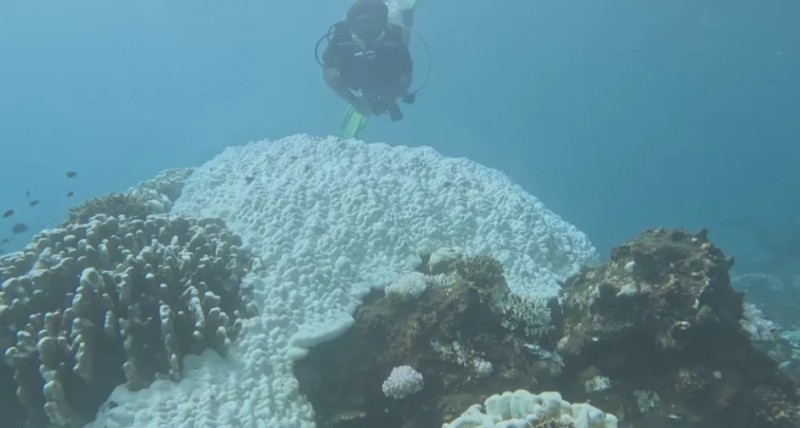ASK EUROPEANS about their most promising source of domestic green energy and many would point to the North Sea. More than 15 gigawatts (GW) of offshore wind farms have been installed, a number supposed to grow to at least 300GW by 2050. But another promising source is opening up farther south. Governments in Europe want the Mediterranean, with its ample sunshine, to turn itself quickly into a green-hydrogen hotbed.

(FILES) This underwater photograph shows light penetrating the water surface in the Mediterranean Sea off the coast of Batroun city on August 1, 2023. Global temperatures « smashed » heat records last year, as heatwaves stalked oceans and glaciers suffered record ice loss, the United Nations said on March 19, 2024, warning 2024 was likely to be even hotter. The annual State of the Climate report by the UN’s World Meteorological Organization confirmed preliminary data showing 2023 was by far the hottest year ever recorded. (Photo by Ibrahim CHALHOUB / AFP)(AFP)
The solar and wind maps below show the vast potential of the region. Spain, for example, basks in a daily average of 4.6 kilowatt-hours of sunlight per square metre and Morocco in 5.6kwh, double what Germany can expect. In parts of northern Africa, both sun and wind are abundant, forming a rare sweet spot that could power electrolysers, the machines that use electricity to split water into oxygen and hydrogen. “There are only ten such locations around the world,” explains Benedikt Ortmann, who runs the solar business of BayWa, a German energy and construction company.Unlock exclusive access to the story of India’s general elections, only on the HT App.
If plans for Europe’s southern powerhouse go well they will give the continent access to plenty of cheap renewable energy and allow it to clean up its carbon-spewing heavy industry. However, the development of renewable energy projects in the region lags behind that in the north.
Solar and wind plants in Germany, for example, currently have the capacity for around 35,000 more megawatts of energy production than Spain could generate. Across the North Sea, more than 3,700 new solar and wind projects are in development, according to Rystad Energy, a consultancy. Only 346 are earmarked for the Mediterranean. In northern Africa, the most promising site for new projects, political and regulatory instability increases risks and the cost of capital, which deters developers from investing in new projects.
Even if more projects did spring up across the Med, a new hydrogen economy is still a way off. Among many other things, new hydrogen pipelines have to be built or old, natural-gas ones repurposed, a market for hydrogen would have to be created, and financing for hydrogen projects secured. It will still take a few years before the Med is known as much for its electrolysers and hydrogen as for its beaches and parties.



